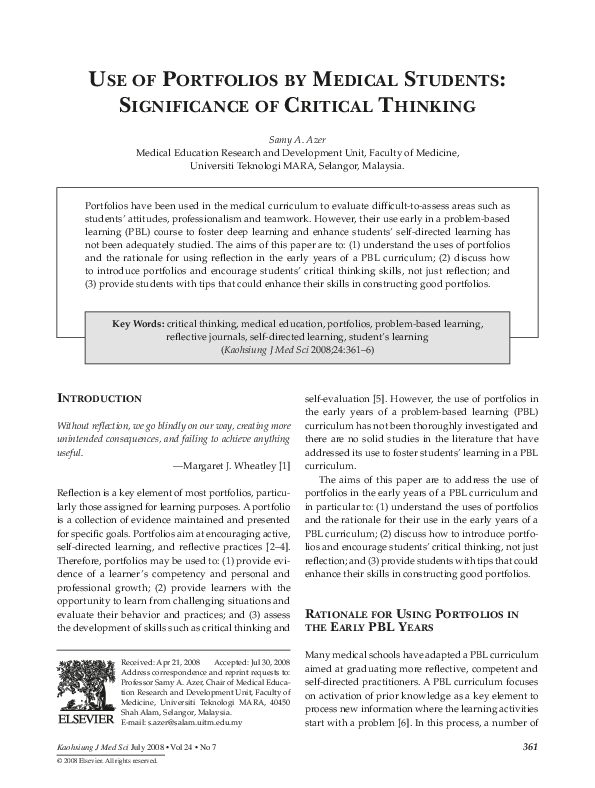Assessing Critical Thinking in Portfolios: A Journey Through the Mind
Education is not just about rote memorization and regurgitation of facts; it should be an endeavor that nurtures critical thinking skills. In today’s fast-paced, information-driven world, it is more important than ever for students to develop the ability to think critically and analyze situations from multiple perspectives. But how can we accurately assess these skills? One innovative approach gaining traction in alternative schooling and education is the use of portfolios.
Traditionally, assessments have focused on standardized tests or exams, which often measure a student’s ability to recall information rather than their capacity for critical thinking. Portfolios provide a different avenue for showcasing a student’s intellectual growth, allowing them to demonstrate their ability to reason, problem-solve, and make informed decisions.
So what exactly does assessing critical thinking in portfolios entail? It involves evaluating a collection of work that reflects a student’s journey through their educational experiences. These portfolios can include essays, research papers, creative projects, presentations – basically anything that showcases the depth and breadth of a student’s understanding.
The first step in assessing critical thinking through portfolios is carefully selecting artifacts that demonstrate various aspects of critical thinking. This includes evidence of logical reasoning, analysis and interpretation of data or texts, evaluation of arguments or claims made by others, creativity in problem-solving scenarios, effective communication skills both verbally and in writing – just to name a few.
It is essential for educators to provide clear guidelines on what they are looking for within each artifact included in the portfolio. For example:
1) Logical Reasoning: Look for evidence where students have applied deductive or inductive reasoning effectively. This could be demonstrated through well-structured arguments with sound premises leading to valid conclusions.
2) Analysis/Interpretation: Seek examples where students have analyzed complex information or texts critically. Are they able to identify biases or fallacies? Can they extract relevant information and make connections?
3) Evaluation: Assess how students engage with arguments or claims made by others. Do they consider multiple perspectives? Are they able to identify strengths and weaknesses in the arguments presented?
4) Problem-solving/Creativity: Look for instances where students have encountered real-world problems and provided innovative solutions. How do they approach challenges? Are they able to think outside the box?
5) Communication: Evaluate their ability to express themselves effectively both orally and in writing. Can they articulate their thoughts clearly, coherently, and convincingly?
Once artifacts are selected, it is crucial to provide a clear rubric outlining expectations for each criterion mentioned above. This helps ensure consistency in assessment across different portfolios while providing valuable feedback for improvement.
Now, some might argue that assessing critical thinking through portfolios is subjective or open to bias. While it’s true that interpretation can vary from person to person, using a well-designed rubric grounded in research-backed criteria mitigates this risk significantly.
Furthermore, portfolios allow for a holistic evaluation of students’ growth over time rather than just focusing on one snapshot moment like a test does. They capture the evolution of thinking patterns, problem-solving skills, communication abilities – all essential aspects of critical thinking.
It is worth noting that assessing critical thinking through portfolios does not negate the importance of other forms of assessment entirely. It should be seen as an additional tool used alongside traditional methods to gain a more comprehensive understanding of student capabilities.
In conclusion, assessing critical thinking in portfolios offers an exciting alternative to traditional assessments by providing an opportunity for students to showcase their intellectual prowess beyond mere memorization. By carefully selecting artifacts and utilizing clear criteria-based rubrics, educators can evaluate various facets of critical thinking effectively. So let us embrace this journey through the mind – one artifact at a time!

Leave a comment